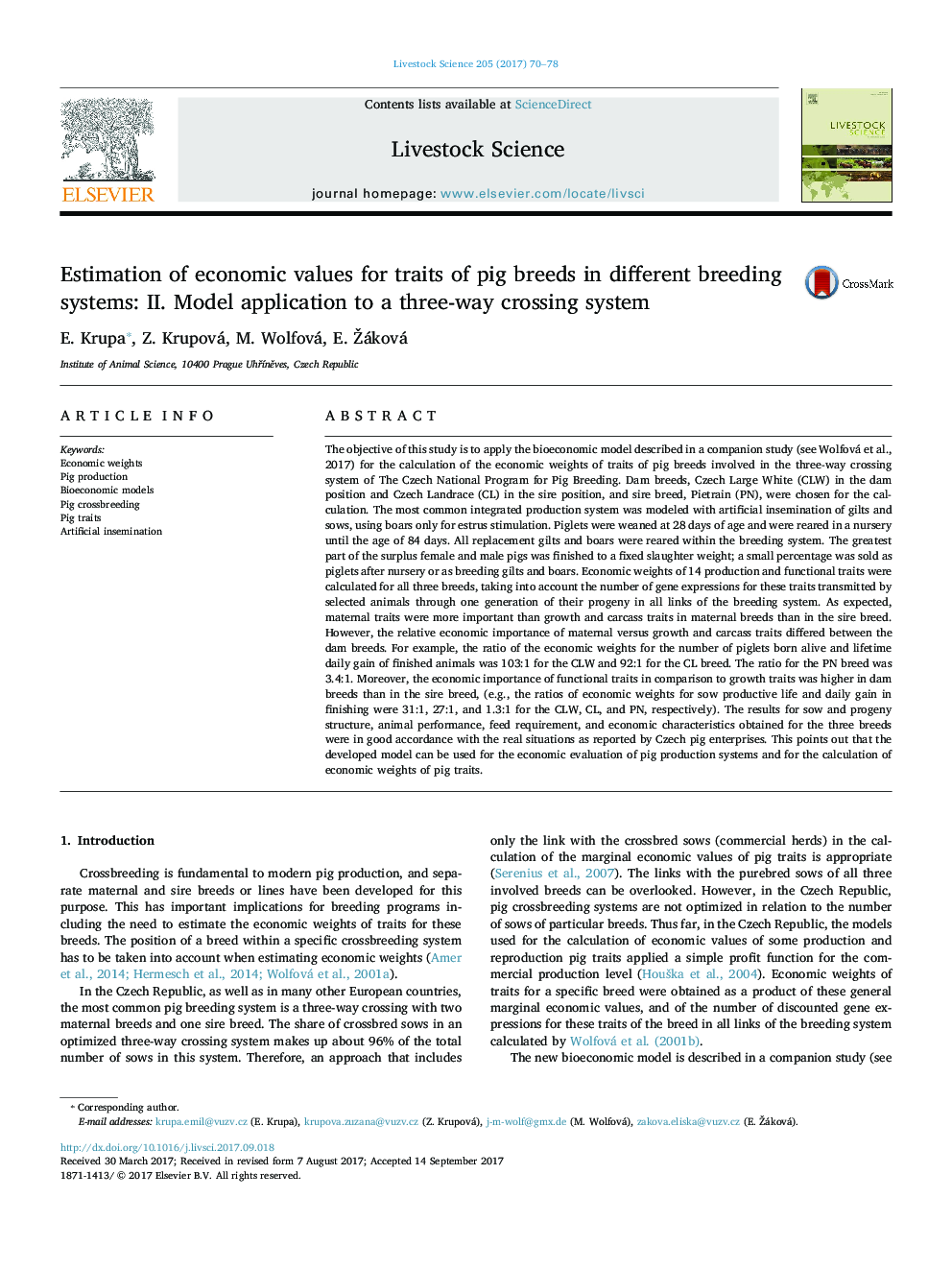| کد مقاله | کد نشریه | سال انتشار | مقاله انگلیسی | نسخه تمام متن |
|---|---|---|---|---|
| 5542914 | 1553927 | 2017 | 9 صفحه PDF | دانلود رایگان |
عنوان انگلیسی مقاله ISI
Estimation of economic values for traits of pig breeds in different breeding systems: II. Model application to a three-way crossing system
دانلود مقاله + سفارش ترجمه
دانلود مقاله ISI انگلیسی
رایگان برای ایرانیان
کلمات کلیدی
موضوعات مرتبط
علوم زیستی و بیوفناوری
علوم کشاورزی و بیولوژیک
علوم دامی و جانورشناسی
پیش نمایش صفحه اول مقاله

چکیده انگلیسی
The objective of this study is to apply the bioeconomic model described in a companion study (see Wolfová et al., 2017) for the calculation of the economic weights of traits of pig breeds involved in the three-way crossing system of The Czech National Program for Pig Breeding. Dam breeds, Czech Large White (CLW) in the dam position and Czech Landrace (CL) in the sire position, and sire breed, Pietrain (PN), were chosen for the calculation. The most common integrated production system was modeled with artificial insemination of gilts and sows, using boars only for estrus stimulation. Piglets were weaned at 28 days of age and were reared in a nursery until the age of 84 days. All replacement gilts and boars were reared within the breeding system. The greatest part of the surplus female and male pigs was finished to a fixed slaughter weight; a small percentage was sold as piglets after nursery or as breeding gilts and boars. Economic weights of 14 production and functional traits were calculated for all three breeds, taking into account the number of gene expressions for these traits transmitted by selected animals through one generation of their progeny in all links of the breeding system. As expected, maternal traits were more important than growth and carcass traits in maternal breeds than in the sire breed. However, the relative economic importance of maternal versus growth and carcass traits differed between the dam breeds. For example, the ratio of the economic weights for the number of piglets born alive and lifetime daily gain of finished animals was 103:1 for the CLW and 92:1 for the CL breed. The ratio for the PN breed was 3.4:1. Moreover, the economic importance of functional traits in comparison to growth traits was higher in dam breeds than in the sire breed, (e.g., the ratios of economic weights for sow productive life and daily gain in finishing were 31:1, 27:1, and 1.3:1 for the CLW, CL, and PN, respectively). The results for sow and progeny structure, animal performance, feed requirement, and economic characteristics obtained for the three breeds were in good accordance with the real situations as reported by Czech pig enterprises. This points out that the developed model can be used for the economic evaluation of pig production systems and for the calculation of economic weights of pig traits.
ناشر
Database: Elsevier - ScienceDirect (ساینس دایرکت)
Journal: Livestock Science - Volume 205, November 2017, Pages 70-78
Journal: Livestock Science - Volume 205, November 2017, Pages 70-78
نویسندگان
E. Krupa, Z. Krupová, M. Wolfová, E. Žáková,